
Thomas Breen file photo
CT Education Commissioner Charlene Russell-Tucker: "I want Team New Haven to know that the Department of Education is here to support the work that you are doing."
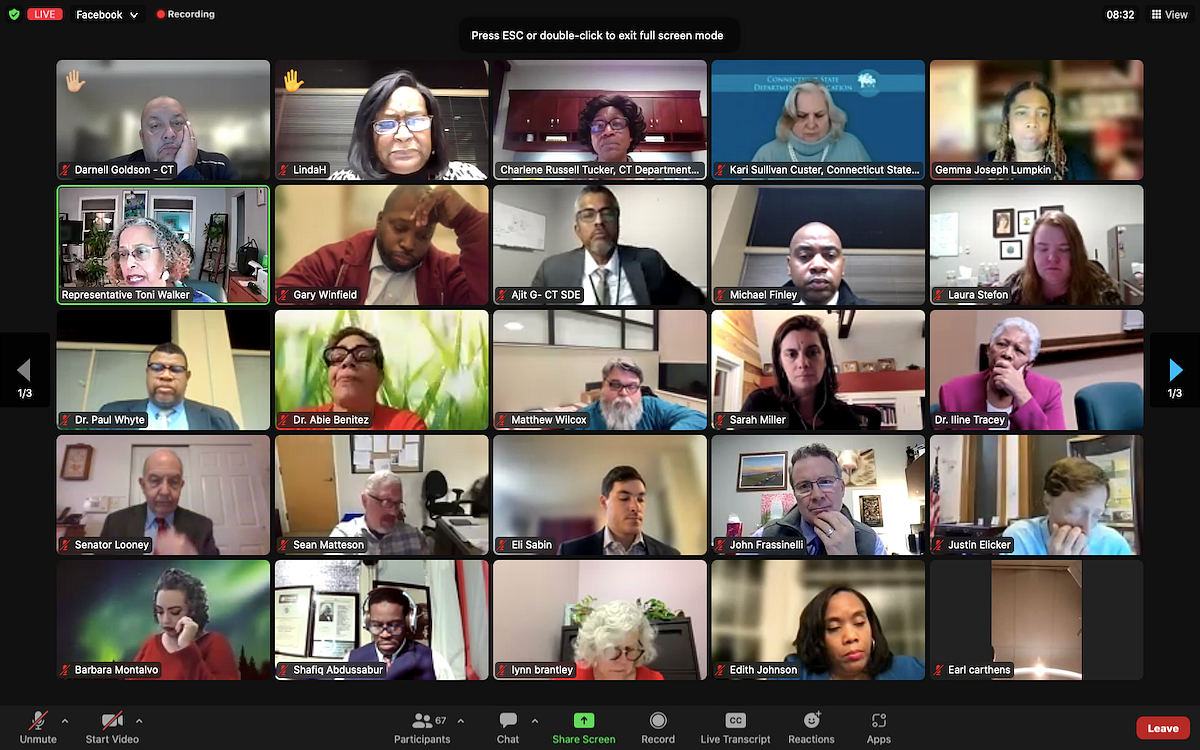
Tuesday's state delegation-organized meeting about NHPS.
Connecticut’s top education official and New Haven state lawmakers called city public school district leaders to the table for a reality check on student chronic absenteeism — and for a discussion on improving local public education while working as one “Team New Haven.”
That meeting took place Tuesday evening online via Zoom. Organized by New Haven’s state legislative delegation, the meeting brought together state lawmakers, members of New Haven’s Board of Education and Board of Alders, and state Department of Education Commissioner Charlene Russell-Tucker to talk about missed classes and literacy and math concerns with NHPS students.
The conversation broadcasted to the public on Facebook Live, and was moderated by New Haven State Rep. Toni Walker. It was held against the backdrop of deep concerns about chronic absenteeism, low reading and math scores, and a district-wide teacher shortage in the New Haven Public Schools.
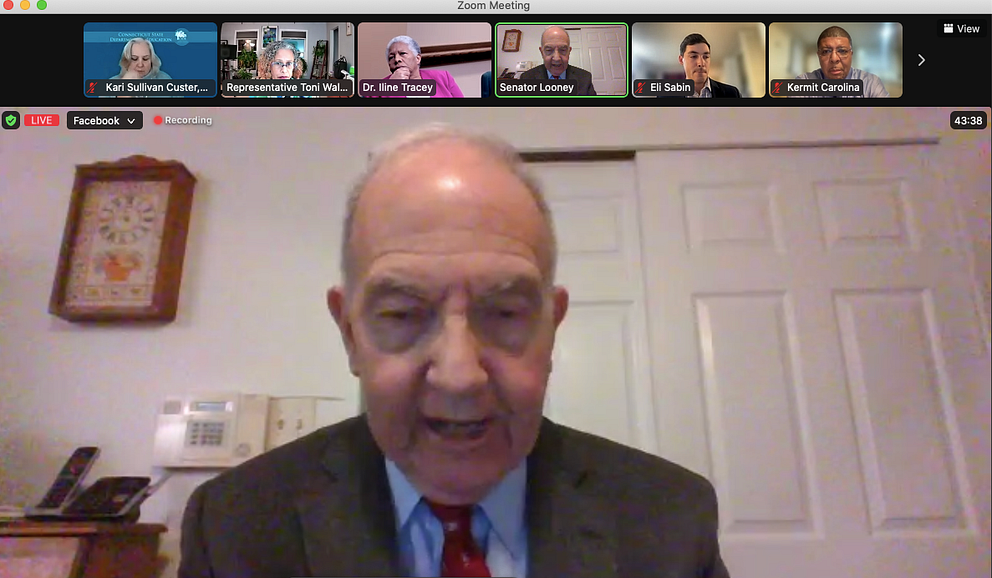
State Sen. President Martin Looney: "Many critical issues we're confronting all at the same time."
“There are so many critical issues that we’re confronting all at the same time,” New Haven State Sen. and President Pro Tem Martin Looney said. “Many of which have been exacerbated by the pandemic, but many were pre-exacerbated before the pandemic. We’re concerned about making sure there’s transparency and a general understanding about the amounts of money that New Haven has been receiving over the past few years.”
“In order to be in a strong position to continue our advocacy for our own schools, we need to have a strong sense of exactly where we are going into the new [state legislative] session,” Looney added.
Throughout the evening around 70 participants joined the meeting. Those attendees included community members, alders, and local educators.
Watch the full meeting above.
State Education Commissioner Charlene Russell-Tucker described Tuesday’s meeting as an effort to help NHPS develop its call to action around high numbers of students missing class and low levels of reading and math proficiency.
She added that the state has begun assisting with New Haven’s plans to improve its holistic education plans through weekly meetings and has a goal to “expand the base of constituencies and voices to assist in impactful and sustainable change in NHPS.”
Tuesday’s presentation by state Department of Education staff reviewed New Haven’s shifts in student demographics, fiscal resources, student performance, and attendance.
“I want Team New Haven to know that the Department of Education is here to support the work that you are doing,” Russell-Tucker said.
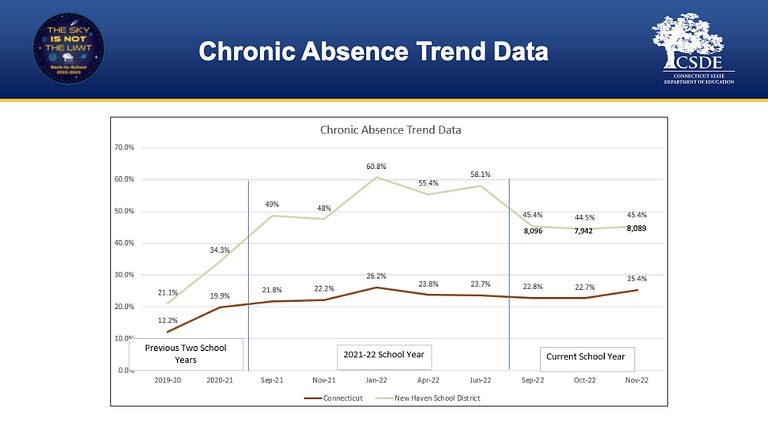
State education staff highlighted that NHPS enrollment has declined overall by nearly 9 percent over the past three years. All the while, the percentage of English Language Learners has increased significantly to nearly 1 in 5 students, 19.4 percent of the total student body.
View the full Connecticut State Department of Education (CSDE) presentation here.
In a presentation about student performance, state Chief Performance Officer Ajit Gopalakrishnan reported that prior to the pandemic, in both literacy and mathematics, NHPS had higher scores than fellow urban school districts in the state like Bridgeport, Hartford and Waterbury.
He added that during the pandemic, in both literacy and math, New Haven “has lost substantially more ground than its urban peers,” causing New Haven’s achievement rates to now be similar to those other cities. Click here to use the state’s performance index system.
Russell-Tucker encouraged New Haveners, and in particular parents of NHPS students, to “understand how to use our eyesight data portal to answer the question: How is my school doing? And by extension: How is my child doing in that school?”
Urgency Urged

State Sen. Gary Winfield: Students "don't get to relive any of these years."
Throughout the meeting several speakers acknowledged the recent shooting death of 16-year old Metropolitan Business Academy student Joshua Vazquez, who was killed in the West Hills neighborhood Monday afternoon.
“It’s sobering to be in the conversation carrying that,” said New Havener and state Board of Education Chair Karen DuBois-Walton “Because what we are about here is about life and death for our learners in New Haven as we all know, and we come to it with that sense of urgency.”
New Haven political and civil leaders called on Tuesday for the biggest issues facing NHPS to be addressed with urgency.
“For me it is always urgent because these kids don’t get to be 5, 6, 7, 8, 9, or 10 again. They don’t get to relive any of these years where we have not been successful in delivering to them the education that they’re supposed to get,” State Sen. Gary Winfield said.
CSDE Division Director John Frassinelli presented the report on chronic absenteeism and how it has been on the rise over the years. Students are considered chronically absent if they miss 10 percent or more of the district’s total number of school days.
Using a trend data chart, Frassinelli showed that in 2019 – 2020, New Haven’s chronic absenteeism rate was 21 percent. That began to increase when the pandemic arrived. Rates reached an all time high in January 2022 during the Omicron surge. At that time New Haven’s chronic absenteeism rate hit 60.8 percent. Since then New Haven’s numbers have been on a decline, with 45.4 percent or 8,089 students currently considered chronically absent by this school year’s first marking period.
(Frassinelli used different statistics from the ones presented by NHPS leaders to the Board of Alders’ Education Committee earlier this month, which showed that 34 percent of students were chronically absent during the first marking period.)
Students experiencing homelessness have had the highest rates of chronic absenteeism last school year (79 percent) and this school year (68 percent), while students with disabilities have the second highest chronic absenteeism rates this school year (57 percent.)
Frassinelli said the Connecticut Department of Public Health has cautioned education leaders that a Covid surge is expected to occur post-holidays this winter, but not to the same extent as this past winter’s Omicron impacts.
The presentation also provided updates that NHPS leaders gave to state officials at a Dec. 6 meeting about what district staff who are conducting home visits are learning are the causes and challenges chronically absent students face. The list of such causes include an abundance of family illnesses and concerns around stress and mental health.
“One of the interesting things is that we hear from students that they’re impacted by high numbers of absences among staff,” Frassinelli said. “When staff are absent and staff are our role models for making sure that kids understand that it’s important to be in school everyday, we’re hearing that with high number of substitutes in schools that students are dis-incentivized to attend regularly.”
At the conclusion of the chronic absenteeism presentation, Frassinelli provided the district with several “promising practices” that have been successful in other school districts.
"We've Busted Through The Old Standards"
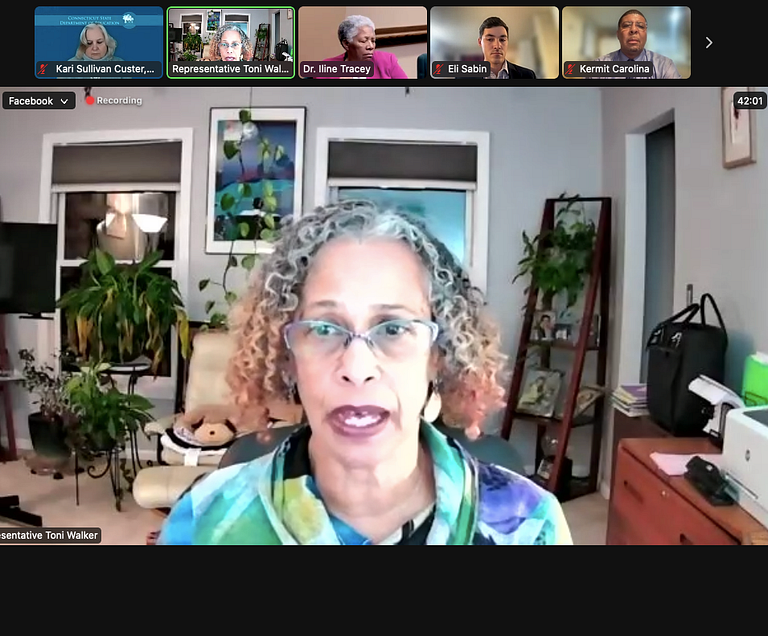
State Rep. Toni Walker.
As an Alliance District, NHPS received $20,904,171 from the state for the 2022 – 2023 school year to allocate to its three focus areas of literacy, math, and chronic absenteeism.
Additionally NHPS was awarded $80 million of American Rescue Plan (ARP) Elementary and Secondary School Emergency Relief Funds (ESSER). According to the state, the district’s balance from this funding remains at $67,309,006.
Russell-Tucker reminded the district that the grant dollar plans are flexible and school leaders have utilized the opportunity to revisit and improve spending plans through the CSDE.
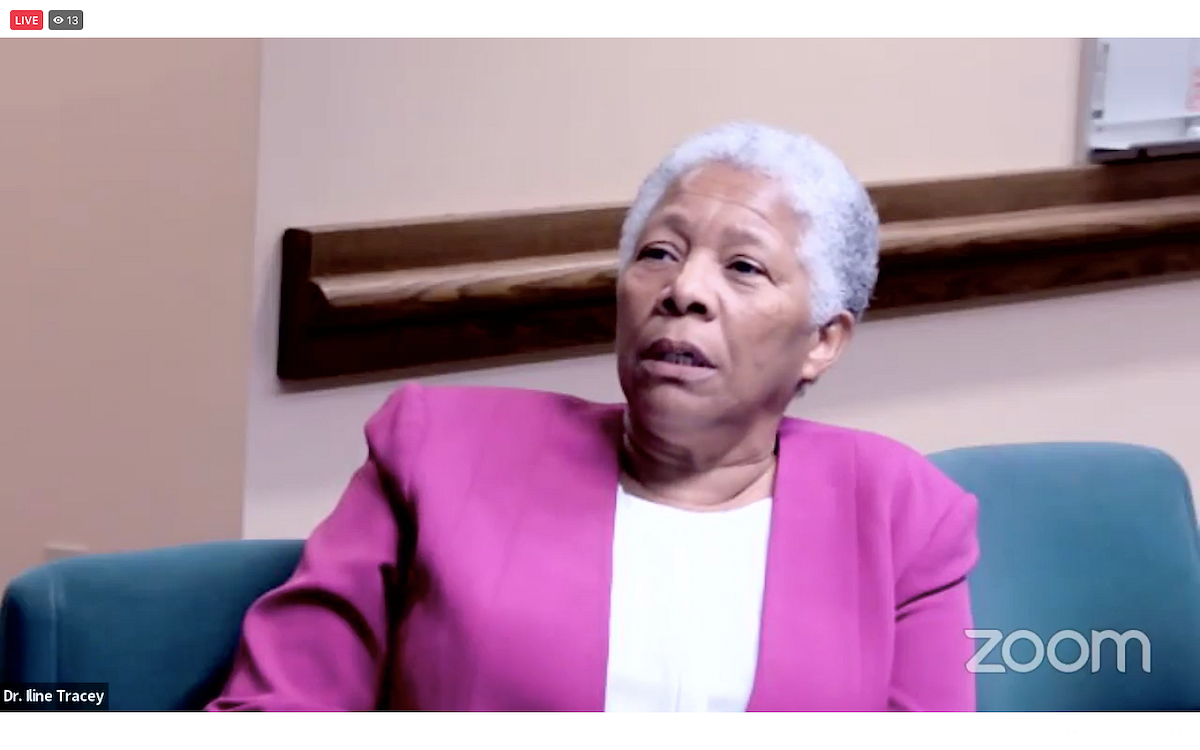
NHPS Supt. Iline Tracey.
“Right now one of our struggles is to get personnel,” NHPS Supt. Iline Tracey said Tuesday night. “Currently we have about 130-something vacancies that are classroom facing that we’re still not able to fill, so we’re struggling right now and that struggle is going to add to the already struggle that we have around teaching and learning.”
New Haven Board of Education member Darnell Goldson asked how the state is determining that chronic absenteeism numbers will continue to decline based only on the district’s first four months of the school year.
Gopalakrishnan explained that often “early chronic absence predicts full year chronic absence.”
“Being able to look at that first three months is a sign of where things are trending,” Gopalakrishnan added. “Early chronic absence is a reasonable indicator of where things are going to end up and where things are right now looks better. We’re heading in the right direction.”
Pre-pandemic, Gopalakrishnan said, the state identified district-wide chronic absenteeism levels between 5 and 30 percent as alarming. “At this phase what we’re really checking is not a particular rate of chronic absence as much as is it heading down. Because it’s so much higher than any of our standards and benchmarks that we had for where this should be,” Gopalakrishnan said. “Clearly the old standards, we’ve busted through those standards.”
To continue offering support and assistance to NHPS, Russell-Tucker said CSDE plans to continue collecting chronic absenteeism reports from the district on a monthly basis.
Winfield asked the district to provide the community with its current detailed plan to address chronic absenteeism.
“What actually happens? Is it just the school can choose to respond? Or is it that schools have to respond in one of three ways? What do we do when that happens?” Winfield asked.
“What I know is that it does also make a difference who interacts with those parents. If it’s a teacher that’s known to the parents or even an administrator that’s known to the parents, that’s different than a school administrator or a call that comes from a robocall,” he added.
CSDE Education consultant Kari Sullivan-Custer said each NHPS school should have an attendance team that connects students missing 8 – 10 days with Tier 2 intervention supports, meaning personalized connections with drop out prevention specialists or teachers.
Tracey highlighted that NHPS has amped up its drop out prevention specialist team, community partners, care coordinators, and parent liaisons to address chronic absenteeism.
Goldson requested to hear more in the future about the caseloads of the district’s drop out prevention staff.
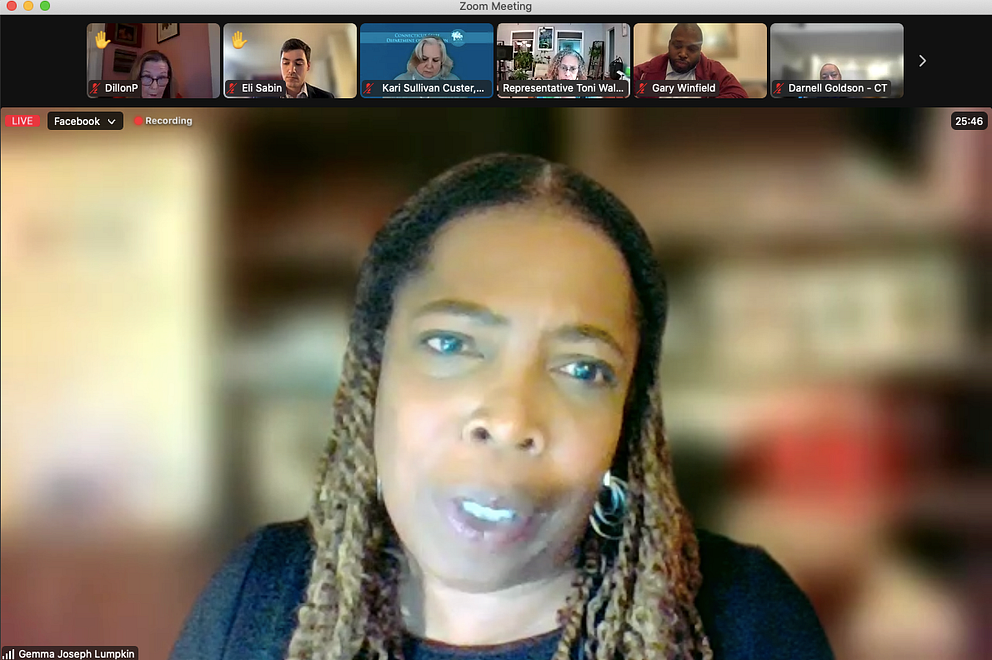
NHPS Chief of Youth, Family and Community Engagement Gemma Joseph Lumpkin.
NHPS Chief of Youth, Family and Community Engagement Gemma Joseph Lumpkin added that the district has begun working with Connecticut consultants Attendance Works, has weekly meetings with CSDE, has created district-wide and school-based attendance teams, is working to improve its attendance taking system, and is collaborating with other districts in the state to learn additional successful practices. (Click here for a district presentation provided at a Nov. 30 Teaching and Learning Committee meeting.)
“I have children in New Haven Public Schools. I went to New Haven Public Schools. I live in Newhallville. This is a matter of urgency. It’s not business,” Joseph Lumpkin said. “This is personal.”
Winfield suggested the district additionally provide families with school-wide attendance data to see “how your child compares” and hopefully motivate them to improve their students’ attendance.
Board of Education Vice President Matt Wilcox asked in the chat how New Haven’s chronic absenteeism data compares to other urban districts and if any of those districts have successful practices that New Haven could consider implementing. Sullivan-Custer responded she does host weekly “Talk Tuesday” meetings with several districts to discuss improvement practices.
“One thing that Tuesday does is it does bring our districts together because we’re all facing the same issues. Hartford, Bridgeport, Waterbury, New Britain, New Haven all have the same list of reasons why kids are not coming to school,” she said. “So where we can make connections to where’s there’s success that’s is where we can be pivotal to help New Haven.”
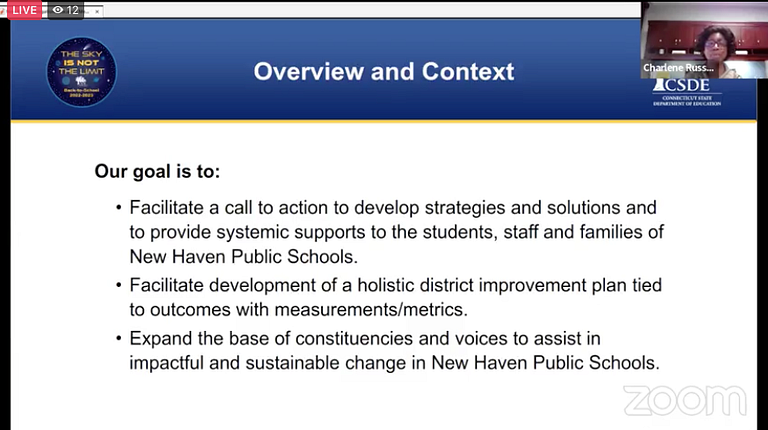
Walker reminded NHPS leaders throughout the meeting that the Tuesday meeting is not an “attack” on the district or NHPS staff. “We’re talking about the plans so that we can all understand it and try and see if there are things that we can help with,” she said. “It’s got to be everybody or none.”

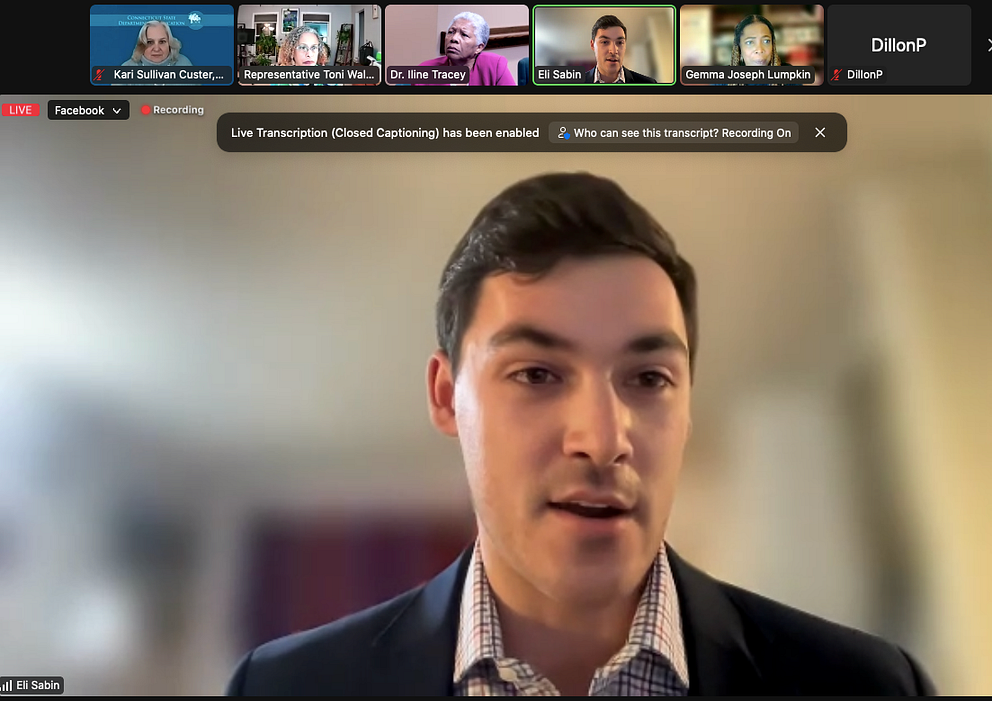
Downtown/East Rock Alder Eli Sabin.
State Rep. Pat Dillon raised concerns about how the district’s plans will be operationalized with the staff shortage challenges.
And Downtown/East Rock Alder and Board of Alders Education Committee Chair Eli Sabin added that the district’s drop out prevention team of 13 to 15 staff, that will soon hire five more, is not enough people to support 8,000 chronically absent students.
Tracey clarified that the district’s drop out prevention specialists are not the only people taking on the task of engaging with families. The district’s grant dollars have allowed them to hire care coordinators to help with this task, every school has an attendance team, and the district is partnering with community partners like LEAP and the city’s youth department, she said.
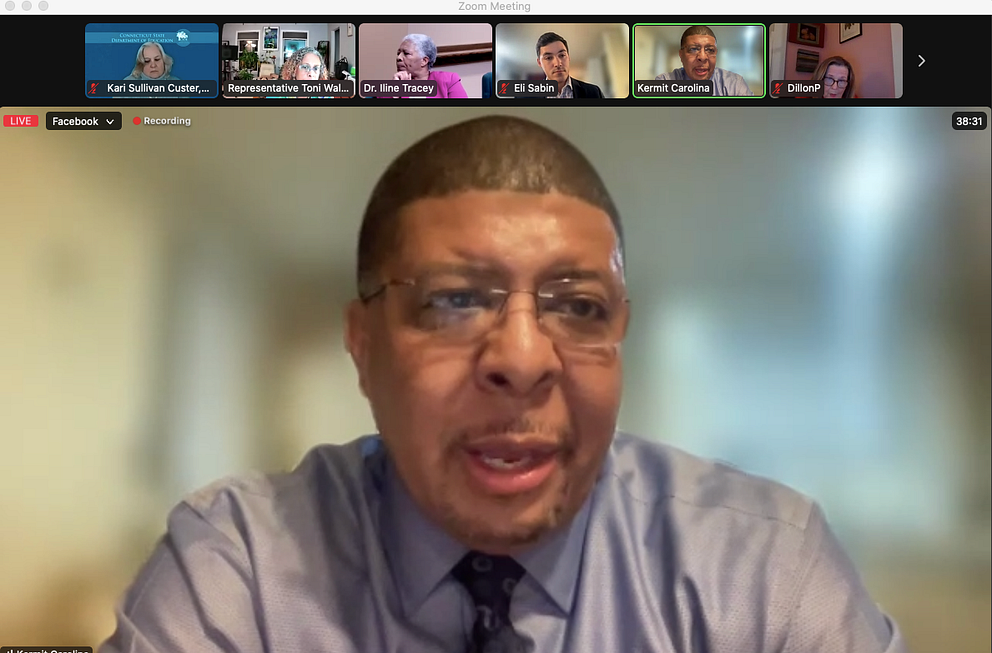
Wilbur Cross Interim Principal Kermit Carolina.
Interim Wilbur Cross High School Principal and NHPS Supervisor of Youth, Family and Community Engagement Kermit Carolina added that there has been a “cultural shift when it comes to attendance” and that the entire community must be enlisted to win this “war” against chronic absenteeism.
“Many of our parents have become a lot more lax to the attendance issue coming out of Covid,” he said. “We have to begin to message again as leaders that attendance is very important and the impact that it has on education.”

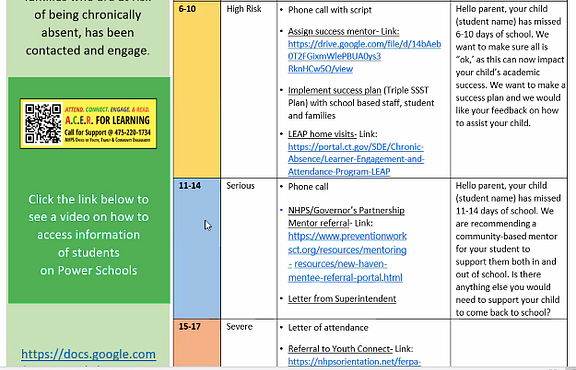
Walker and Russell-Tucker ended Tuesday meeting with a promise to convene again with the public and continue the discussion around NHPS concerns.
“The 19,000 plus students in New Haven deserve to have all of us work together — as you mention, Team New Haven — on their behalf,” Russell-Tucker said.
















The worst nine words you can hear, "We're from the State and we're here to help". Having worked for three municipalities in 30 years it still sends shivers down my spine. You can put money on it that they won't do anything themselves but will have you chasing your tail with all their recommendations sent from their home office, yes that's right most State workers are still working from home.